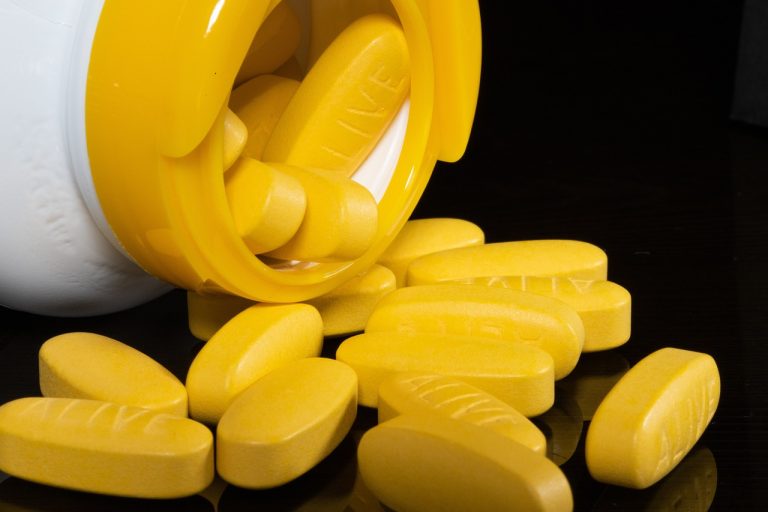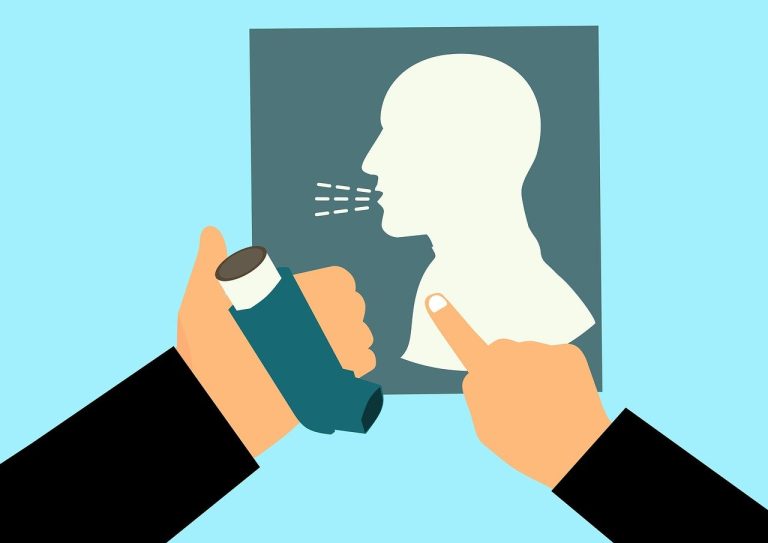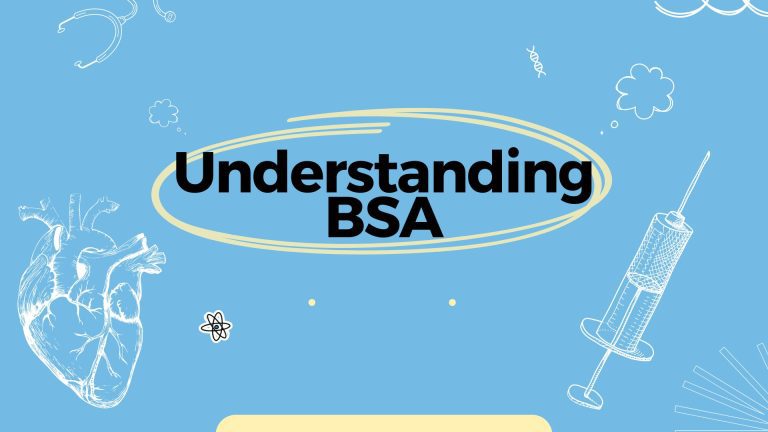Book Appointment Now

Drug Interactions and Contraindications
Understanding drug interactions and contraindications is paramount in the ever-changing pharmacy field. These concepts are crucial for ensuring patient safety and optimizing therapeutic outcomes.
Drug interactions occur when one drug affects the activity of another drug when both are administered together. This can result in increased effectiveness, reduced effectiveness, or adverse effects.
Contraindications are specific situations or conditions where a particular drug should not be used because it could harm the patient.
Pharmacists must have a thorough knowledge of drug interactions and contraindications. This enables them to identify potential issues, provide valuable information to pharmacists, and effectively educate patients.
Recognizing and managing these factors can prevent serious health complications and improve patient care.
Understanding Drug Interactions
Drug interactions occur when the presence of another drug, food, drink, or environmental chemical agent alters the effects of one drug.
These interactions can enhance or diminish a drug’s efficacy or result in adverse effects. Understanding drug interactions is crucial for preventing potential negative outcomes and optimizing therapeutic efficacy.
Mechanisms of Drug Interactions
- Pharmacokinetic Interactions:
- Absorption: Drug absorption can be influenced by interactions that alter gastric pH, gastrointestinal motility, or chelation (drug binding).
- Example: Antacids can decrease the absorption of tetracycline antibiotics by altering the stomach’s pH and binding with the drug.
- Distribution: Interactions at this stage can involve changes in protein binding. Drugs can compete for binding sites on plasma proteins, affecting the distribution.
- Example: Warfarin, a highly protein-bound drug, can be displaced by another drug, such as aspirin, increasing the free concentration of warfarin and the risk of bleeding.
- Metabolism: Many drug interactions occur at the metabolism level, primarily involving the liver’s cytochrome P450 (CYP450) enzyme system. Drugs can either inhibit or induce these enzymes.
- Example: The antifungal drug ketoconazole inhibits CYP3A4, increasing the plasma concentration of drugs metabolized by this enzyme, such as certain statins.
- Excretion: Drugs can alter renal excretion by changing urinary pH or by competing for renal tubular secretion.
- Example: Probenecid can inhibit the renal excretion of penicillin, prolonging its action in the body.
- Absorption: Drug absorption can be influenced by interactions that alter gastric pH, gastrointestinal motility, or chelation (drug binding).
- Pharmacodynamic Interactions:
- Synergistic Effects: When two drugs with similar effects are taken together, the result can be an enhanced therapeutic effect.
- Example: Combining antihypertensive drugs, such as ACE inhibitors and diuretics, can lead to a greater reduction in blood pressure.
- Antagonistic Effects: When one drug reduces or opposes the effect of another.
- Example: Beta-blockers, which lower heart rate, can counteract the effects of beta-agonists like albuterol, used for asthma.
- Synergistic Effects: When two drugs with similar effects are taken together, the result can be an enhanced therapeutic effect.
Common Types of Drug Interactions
- Drug-Drug Interactions:
- These occur when two or more drugs react with each other. This can cause unexpected side effects or reduce the effectiveness of one or both drugs.
- Example: The combination of warfarin and NSAIDs like ibuprofen increases the risk of bleeding.
- Drug-Food Interactions:
- Certain foods can affect the pharmacokinetics of a drug, altering its absorption, metabolism, or excretion.
- Example: Grapefruit juice can inhibit the metabolism of certain drugs, such as statins and calcium channel blockers, leading to higher blood levels and an increased risk of side effects.
- Drug-Disease Interactions:
- Pre-existing medical conditions can affect how drugs work. These interactions occur when a drug exacerbates a condition or when the condition alters the drug’s effect.
- Example: Non-selective beta-blockers like propranolol can worsen asthma symptoms by constricting the airways.
Examples of Significant Drug Interactions
- Warfarin and NSAIDs:
- Both drugs affect bleeding; NSAIDs can irritate the gastrointestinal tract, while warfarin inhibits clotting. Together, they significantly increase the risk of serious bleeding.
- Statins and Grapefruit Juice:
- Grapefruit juice inhibits the CYP3A4 enzyme, leading to higher levels of statins in the bloodstream, increasing the risk of muscle toxicity and rhabdomyolysis.
- ACE Inhibitors and Potassium-Sparing Diuretics:
- Both can increase potassium levels in the blood. When used together, they can lead to hyperkalemia, a condition characterized by dangerously high potassium levels.
Identifying Drug Interactions
- Tools and Resources:
- Utilize drug interaction checkers, databases, and software to screen for potential interactions. Examples include Lexicomp, Micromedex, and the FDA’s Drug Interaction Database.
- Regularly update your knowledge with continuing education and professional resources.
- Red Flags and Warning Signs in Patient Profiles:
- Be vigilant for certain red flags, such as polypharmacy (use of multiple medications), recent changes in medication regimens, and the use of over-the-counter supplements and herbal products.
- Review patient histories thoroughly to identify potential interactions with new prescriptions.
Warfarin and NSAIDs
- Description: Warfarin is an anticoagulant used to prevent blood clots, while nonsteroidal anti-inflammatory drugs (NSAIDs) like ibuprofen are commonly used for pain relief and inflammation.
- Interaction: Both warfarin and NSAIDs increase the risk of bleeding, but through different mechanisms. Warfarin inhibits clot formation, and NSAIDs can cause gastrointestinal irritation and reduce platelet function.
- Clinical Impact: The combination significantly increases the risk of gastrointestinal bleeding and other types of hemorrhage.
- Management: Avoid concurrent use if possible. If both are necessary, monitor the patient closely for signs of bleeding and consider using alternative pain relief methods such as acetaminophen.
Statins and Grapefruit Juice
- Description: Statins, such as atorvastatin, are used to lower cholesterol levels. Grapefruit juice contains compounds that inhibit the cytochrome P450 3A4 (CYP3A4) enzyme, which metabolizes many drugs, including statins.
- Interaction: Inhibition of CYP3A4 by grapefruit juice increases the blood levels of statins.
- Clinical Impact: Elevated statin levels can increase the risk of side effects, particularly myopathy and rhabdomyolysis, which are severe muscle-related conditions.
- Management: Patients taking statins should be advised to avoid grapefruit juice or consume it in moderation. If they continue to consume grapefruit juice, their statin therapy might need adjustment.
ACE Inhibitors and Potassium-Sparing Diuretics
- Description: ACE inhibitors, such as lisinopril, are used to treat high blood pressure and heart failure. Potassium-sparing diuretics, like spironolactone, help reduce fluid retention without causing potassium loss.
- Interaction: Both ACE inhibitors and potassium-sparing diuretics increase potassium levels in the blood.
- Clinical Impact: The combination can lead to hyperkalemia, a potentially life-threatening condition characterized by high potassium levels, which can cause cardiac arrhythmias.
- Management: Monitor potassium levels closely when these drugs are used together. Consider alternative therapies if hyperkalemia risk is significant.
Benzodiazepines and Opioids
- Description: Benzodiazepines (e.g., diazepam) are used for anxiety, seizures, and muscle relaxation, while opioids (e.g., morphine) are used for pain relief.
- Interaction: Both drug classes depress the central nervous system (CNS), leading to enhanced sedative effects.
- Clinical Impact: The combination increases the risk of profound sedation, respiratory depression, coma, and death.
- Management: Use the lowest effective doses and consider alternative therapies. Monitor patients closely for signs of CNS depression and respiratory issues. Educate patients about the risks of combining these medications.
Digoxin and Verapamil
- Description: Digoxin is used for heart failure and arrhythmias, while verapamil is a calcium channel blocker used for high blood pressure and angina.
- Interaction: Verapamil can increase digoxin levels by reducing its clearance.
- Clinical Impact: Elevated digoxin levels can cause digoxin toxicity, presenting as nausea, vomiting, dizziness, and serious cardiac arrhythmias.
- Management: Monitor digoxin levels closely when initiating or adjusting verapamil therapy. Adjust digoxin dosage if necessary and monitor for signs of toxicity.
MAO Inhibitors and Tyramine-Containing Foods
- Description: Monoamine oxidase inhibitors (MAOIs) are used to treat depression. Tyramine is found in various foods like aged cheeses, cured meats, and fermented products.
- Interaction: MAOIs inhibit the breakdown of tyramine, leading to its accumulation in the body.
- Clinical Impact: High tyramine levels can cause a hypertensive crisis characterized by dangerously high blood pressure, severe headaches, and potential stroke.
- Management: Patients taking MAOIs should avoid tyramine-rich foods. Provide dietary counseling to ensure they understand which foods to avoid.
Managing Drug Interactions and Contraindications
Preventative Strategies
- Conducting Thorough Medication Reviews:
- Regular Reviews: Review all medications a patient is taking regularly, including prescription drugs, over-the-counter medications, supplements, and herbal products. This helps identify potential interactions and contraindications early.
- Medication Reconciliation: Perform medication reconciliation during every patient visit to ensure all medications are up-to-date and identify potential new interactions.
- Comprehensive Patient History: Gather a comprehensive patient history, including past medical conditions, allergies, and previous adverse drug reactions.
- Educating Patients:
- Patient Awareness: Educate patients about the importance of informing healthcare providers about all their medications, including supplements and herbal products.
- Clear Instructions: Provide clear instructions on how to take medications correctly, including timing, food interactions, and what to avoid.
- Warning Signs: Inform patients about the warning signs of serious interactions or contraindications, such as unusual bleeding, severe muscle pain, or signs of allergic reactions.
Management Strategies for Drug Interactions
- Adjusting Drug Dosages:
- Dose Modifications: Adjust drug dosages to minimize the risk of interactions. For example, lowering the dose of one drug when taken with another that affects its metabolism.
- Monitoring: Increase monitoring for therapeutic levels and adverse effects when starting or stopping a drug that may interact with others.
- Switching to Alternative Medications:
- Alternatives: Identify alternative medications that do not interact with the patient’s current drug regimen. For example, using acetaminophen instead of NSAIDs for pain relief in a patient taking warfarin.
- Consultation: Consult with pharmacists and prescribers to find the best alternatives based on the patient’s overall health condition and current medications.
- Monitoring for Adverse Effects:
- Frequent Monitoring: Regularly monitor patients for signs of adverse effects, especially when new medications are added, or doses are changed.
- Laboratory Tests: Utilize laboratory tests to monitor drug levels, kidney function, liver function, and electrolyte levels as needed to detect early signs of adverse effects.
Management Strategies for Contraindications
- Assessing Risk vs. Benefit:
- Risk Assessment: Carefully assess the risks versus the benefits of using a drug that has a relative contraindication. This includes evaluating the severity of the contraindication and the necessity of the medication.
- Informed Decision: Make informed decisions in collaboration with the patient and the healthcare team, ensuring the patient is aware of the potential risks and benefits.
- Implementing Alternative Therapies:
- Alternative Options: When a drug is contraindicated, seek alternative therapies that do not pose the same risks. For instance, using a different class of antihypertensive medication in a patient with asthma instead of a beta-blocker.
- Non-Pharmacological Interventions: Consider non-pharmacological interventions when appropriate, such as lifestyle modifications, physical therapy, or dietary changes.
- Close Monitoring and Follow-Up:
- Regular Follow-Up: Schedule regular follow-ups to monitor the patient’s therapy response and detect any emerging contraindications or interactions.
- Patient Communication: Maintain open communication with the patient, encouraging them to report any new symptoms or concerns immediately.
Case Studies
- Case Study 1: Warfarin and NSAIDs:
- Scenario: A patient taking warfarin for atrial fibrillation presents with pain and is prescribed ibuprofen.
- Management: The pharmacy technician identifies the potential interaction and recommends using acetaminophen for pain relief instead. The patient is monitored for signs of bleeding, and their INR levels are checked more frequently.
- Case Study 2: Statins and Grapefruit Juice:
- Scenario: A patient taking atorvastatin reports drinking grapefruit juice daily.
- Management: The pharmacy technician educates the patient about the interaction and suggests avoiding grapefruit juice. The patient’s cholesterol levels and muscle health are monitored regularly.
- Case Study 3: ACE Inhibitors and Potassium-Sparing Diuretics:
- Scenario: A patient is prescribed lisinopril and spironolactone.
- Management: The pharmacy technician alerts the prescriber about the risk of hyperkalemia. The prescriber adjusts the medication regimen and schedules regular blood tests to monitor potassium levels.
Risk Factors for Drug Interactions and Contraindications
Several patient-related factors can increase the risk of experiencing drug interactions or encountering contraindications.
Healthcare professionals should consider these risk factors carefully when prescribing medications and monitoring patients.
Age
Elderly Patients: As individuals age, physiological changes can alter the pharmacokinetics (absorption, distribution, metabolism, and excretion) and pharmacodynamics (drug response) of medications.
These changes, combined with the increased likelihood of multiple comorbidities and polypharmacy, put older adults at higher risk for drug interactions and contraindications.
Pediatric Patients: Children, especially neonates and infants, have immature organ systems and physiological processes that can impact drug handling and response.
Additionally, many medications lack comprehensive pediatric dosing and safety data, increasing the potential for interactions and contraindications.
Polypharmacy
The concurrent use of multiple medications, both prescription and over-the-counter, significantly increases the risk of drug interactions. Each additional medication added to a patient’s regimen exponentially increases the potential for drug-drug interactions.
Comorbidities
Patients with multiple chronic conditions often require complex medication regimens, heightening the risk of drug interactions and contraindications. Certain medical conditions may also alter drug pharmacokinetics or pharmacodynamics, compounding the risk.
Genetic Factors
Genetic variations can influence how an individual metabolizes and responds to certain medications. For example, individuals with specific cytochrome P450 enzyme polymorphisms may experience altered drug metabolism, leading to increased or decreased drug levels and potential interactions or contraindications.
Organ Dysfunction
Impaired renal or hepatic function can significantly impact drug elimination and metabolism. Kidney or liver disease patients may require dose adjustments or alternative medications to avoid interactions or contraindications.
Nutritional Status
Nutritional deficiencies or excesses can influence drug absorption, distribution, metabolism, and excretion, potentially leading to interactions or contraindications. For example, certain medications may interact with specific vitamins, minerals, or dietary supplements.
Adherence and Compliance
Patients who do not follow prescribed dosing regimens or make unauthorized changes to their medications are at increased risk for drug interactions and contraindications.
Proper adherence and open communication with healthcare providers are crucial for safe and effective medication management.

Founder of the PTCBFreePracticeTest.com.



